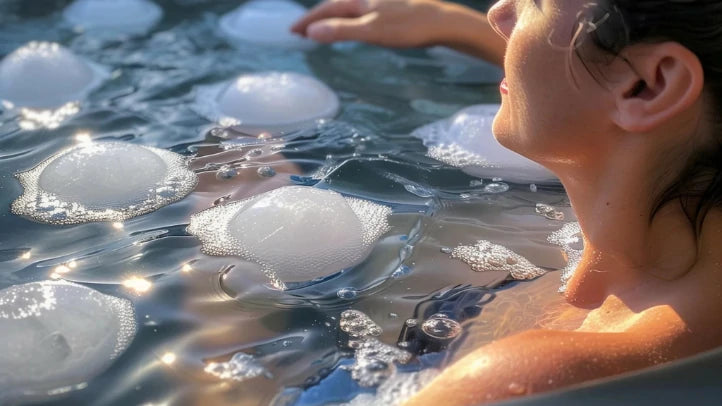Introduction
As we approach summer 2024, the allure of ice bathing beckons, promising a refreshing respite from the heat while offering a myriad of health benefits. For beginners venturing into the world of cold water immersion, embarking on this journey can be both exhilarating and daunting. In this comprehensive guide tailored for novices, we'll navigate the icy waters of ice bathing, equipping you with the knowledge and confidence to embrace this transformative practice.
Understanding the Basics: What is Ice Bathing?
For the uninitiated, ice bathing involves immersing oneself in cold water for therapeutic purposes. Whether it's a bathtub filled with ice cubes or a natural body of cold water, the principles remain the same – exposure to chilly temperatures to invigorate the body and mind.
Preparing for Your Plunge: Safety First
Before taking the plunge, it's crucial to prioritize safety. Ensure that you're in good health and consult with a medical professional if you have any underlying medical conditions. Start with shorter durations and gradually increase exposure time as your tolerance improves. Always have someone nearby to assist you in case of discomfort or emergencies.
Finding Your Chill: Techniques for Ice Bathing
When it comes to ice bathing, there's no one-size-fits-all approach. Experiment with different techniques to find what works best for you. Whether it's a full-body immersion or targeting specific areas with cold packs, listen to your body and adjust accordingly. Remember to breathe deeply and focus on relaxation to enhance the experience.
Navigating the Cold: Managing Discomfort
As a beginner, it's natural to experience discomfort during your initial ice baths. Embrace the sensations and remind yourself of the benefits – improved circulation, reduced inflammation, and a natural energy boost. Gradually acclimate to the cold, and don't push yourself beyond your limits.
Harnessing the Benefits: What Can Ice Bathing Do for You?
Beyond the initial shock of cold water, ice bathing offers a plethora of health benefits. From speeding up recovery after workouts to boosting mood and mental clarity, the rewards are worth the chilly plunge. Embrace the journey and trust in the transformative power of cold water immersion.
Integrating Ice Bathing into Your Routine: Tips for Success
To reap the full benefits of ice bathing, consistency is key. Incorporate regular sessions into your wellness routine, whether it's a post-workout cooldown or a weekly ritual for relaxation. Experiment with different temperatures and durations to find what works best for you.
Overcoming Challenges: Pushing Through the Cold
As you progress on your ice bathing journey, you may encounter challenges along the way. Whether it's overcoming mental barriers or battling the urge to retreat from the cold, stay resilient and stay focused on your goals. Remember, every plunge brings you one step closer to mastery.
Conclusion
In conclusion, ice bathing in summer 2024 offers a refreshing opportunity to explore the transformative power of cold water immersion. As a beginner, approach this practice with curiosity and respect for its potential. With proper preparation, safety precautions, and a willingness to embrace the chill, you'll embark on a journey of self-discovery and holistic wellness.
Reference:
Allan, R., & Mawhinney, C. (2017). Is the ice bath finally melting? Cold water immersion is no greater than active recovery upon local and systemic inflammatory cellular stress in humans. Journal of Physiology, 595(6), 1857-1858.
Joo, C. H., Allan, R., Drust, B., Close, G. L., Jeong, T. S., Bartlett, J. D., ... Gregson, W. (2016). Passive and post-exercise cold-water immersion augments PGC-1α and VEGF expression in human skeletal muscle. European Journal of Applied Physiology, 116(11-12), 2315-2326.
Mawhinney, C., Jones, H., Joo, C. H., Low, D. A., Green, D. J., & Gregson, W. (2013). Influence of cold-water immersion on limb and cutaneous blood flow after exercise. Medicine & Science in Sports & Exercise, 45(12), 2277-2285.
Peake, J. M., Markworth, J. F., Nosaka, K., Raastad, T., Wadley, G. D., & Coffey, V. G. (2015). Modulating exercise-induced hormesis: Does less equal more? Journal of Applied Physiology, 119(3), 172-189.
Peake, J. M., Roberts, L. A., Figueiredo, V. F., Egner, I., Krog, S., Aas, S. N., ... Raastad, T. (2016). The effects of cold water immersion and active recovery on inflammation and cell stress responses in human skeletal muscle after resistance exercise. Journal of Physiology, Advance online publication. https://doi.org/10.1113/JP272881.
Roberts, L. A., Raastad, T., Markworth, J. F., Figueiredo, V. C., Egner, I. M., Shield, A., ... Peake, J. M. (2015). Post-exercise cold water immersion attenuates acute anabolic signalling and long-term adaptations in muscle to strength training. Journal of Physiology, 593, 4285-4301.
White, G. E., Rhind, S. G., & Wells, G. D. (2014). The effect of various cold-water immersion protocols on exercise-induced inflammatory response and functional recovery from high-intensity sprint exercise. European Journal of Applied Physiology, 114, 2353-2367.


